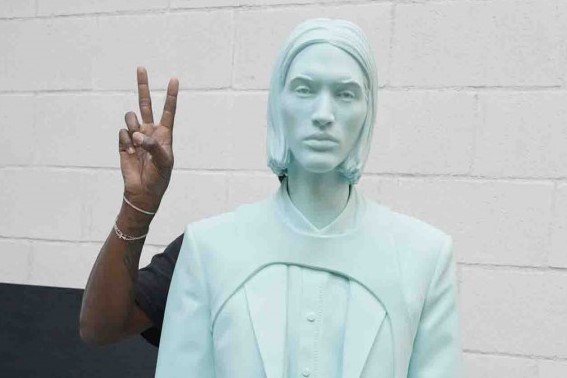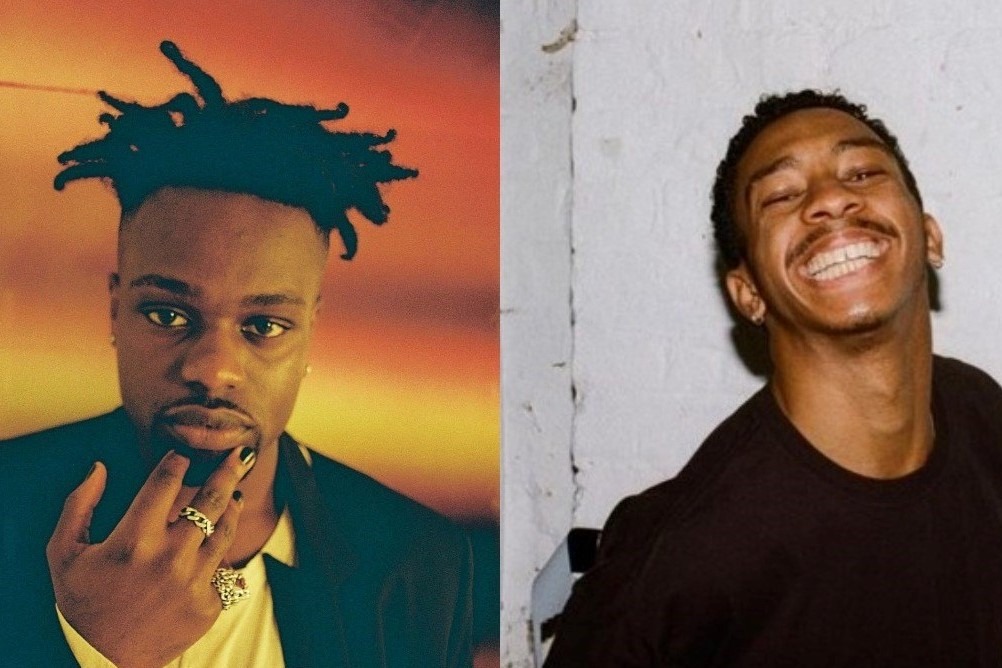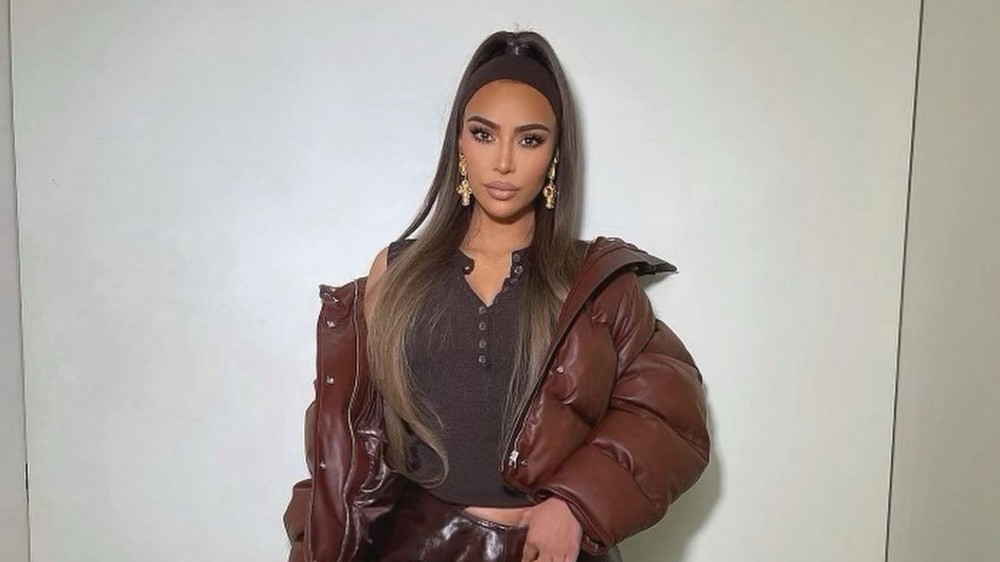
Legends never die: inside Virgil Abloh’s joyful, explorative NY exhibition
Curated by Antwaun Sargent and chronicling the traiblazer’s stratospheric ascent, the Brooklyn Museum’s ‘FIGURES OF SPEECH’ show is not to be missed
They say that legends never truly die, and if ever there was proof of that, it’s the enduring legacy of Virgil Abloh.
Demonstrating exactly that is the latest iteration of “FIGURES OF SPEECH”, an all-encompassing exhibition that shares the multitudes of Abloh’s work that just opened at the Brooklyn Museum. Earlier versions of the show – which debuted in Chicago in 2019 before moving through Boston, Atlanta, and Doha – were staged before the designer’s death in November 2021. Its arrival in New York is the first posthumous showing of the exhibit.
A brilliant celebration of the iconoclast’s life, “FIGURES OF SPEECH” showcases a vast array of his objects, with endless streams of people making a pilgrimage to the borough to bask in his work – which spans prototypes, functional art, runway footage, and swathes of clothes from his PYREX VISION, OFF-WHITE, and Louis Vuitton collections hung on lengthy racks.
There’s even a full-scale “SOCIAL SCULPTURE” visitors can walk through, as well as what can only be described as the most hyped, sought-after uniform ever, with security guards slipping into exclusively designed acid green Nike AF1s. It’s a unique touch emblematic of Abloh’s attention to detail and intention to include everyone in his vision.




“Virgil wanted to make sure they were very much part of the exhibition,” said curator Antwaun Sargent in an interview with GQ. Cut to queues round the block full of sneakerheads trying to score a slice of fashion history, despite the museum issuing a statement that they would definitely not be going up for sale.
Taking over the Brooklyn Museum across the summer, and broken down into sections documenting “FASHION”, “ARCHITECTURE”, “MUSIC”, and more, the exhibition is boldly executed and underscored by Abloh’s unique exploratory perspective, with each room filled with a sense of unshakeable poignancy. Each piece included demonstrates anew his innovative thinking as well as his quest to tear down barriers both for himself and those who come after – whether by championing streetwear as high fashion or upending notions of what constitutes art.
Ultimately, it’s impossible to visit and not be overwhelmed by the impact Abloh had in such a short period of time, nor the tragedy that he was taken from us far too soon. Here’s what to expect should you be heading to Brooklyn to check it out, or can’t make it to New York to see it for yourself.
“FASHION”
Unsurprisingly, fashion dominates the exhibition. At the centre of it all, visible from almost every corner of the show, is a black flag bearing Abloh’s motto, “QUESTION EVERYTHING”, which implores us to examine what we take for granted in the same way he did within his work as a designer. Racks of clothing then take visitors on a chronological journey through his career in fashion – starting at PYREX VISION, which he founded in 2012, fresh from a Fendi internship he undertook alongside best friend and collaborator, Kanye West, and moving through OFF-WHITE, before landing in amongst his offerings at Louis Vuitton.
Utilising deadstock from Champion and Ralph Lauren, and screenprinting each piece with “PYREX 23”, it’s easy to see how Abloh’s first label laid the groundwork for what was to come in OFF-WHITE, with iconic basketball shorts and hybridised flannel shirts lined up against a video installation rolling the film that launched the label, featuring the then only just emerging A$AP MOB. PYREX pieces eventually make way for some of Abloh’s most recognisable pieces for OFF-WHITE, many of which marked him out in the early 2010s as a fashion name to watch.
A prototype of the infamous and largely divisive industrial-style belt – worn and designed for A$AP Rocky’s 2018 album Testing – sits on a table in the middle of the room, while a custom dress created for Beyoncé from her 2018 Vogue cover shoot – which, in the end, didn’t appear in the magazine – hangs languidly nearby. Demonstrating the designer’s range and eclectic inspirations, there’s also pieces from Abloh’s Princess Di collection (SS18’s Natural Woman), as well as his Nothing New offering, created in 2017 in response to Raf Simons’ claim that OFF-WHITE didn’t bring anything original to fashion.

These collections, by his own account, are reactions. And the show is as much an exhibition of his art as it is his politics. His 2018 Temperature collection, which saw him enlist Jenny Holzer to create poems and videos about the experiences of refugees across the globe, also makes an appearance. Mannequins draped in these designs stand on top of tables, towering over people as they rush to post for Instagram photos, while others pore over the work in silence. Similarly poignant are the more subtle glimpses of Abloh’s small triumphs on the way to success. Boxes of t-shirts from his collaboration with Shayne Oliver’s Hood by Air sit in an artful pile, while one of earliest accomplishments as a designer, a t-shirt for much-missed French boutique Colette – one of the earliest champions of streetwear as high fashion – is also on the line-up.
But there are few moments more magnificent than Abloh’s first runway show as the men’s artistic director of Louis Vuitton. In 2019, the designer took over the Tuileries gardens in Paris on a gloriously sunny day, inviting local students to line the runway as he debuted his Dark Side of the Rainbow collection. Centred around boyhood fantasies and, more specifically, The Wizard of Oz, the catwalk show plays on loop on a projection onto the museum’s walls – a timely reminder of what can happen when you dare to dream.
“ARCHITECTURE”
The fluidity of Abloh’s creativity means that so many references within his work go back to where it all started: his master’s degree in architecture, which he gained at the Illinois Institute of Technology. There are endless references to his beginnings in this show, with urban landscapes, street signs, and construction sites dotted throughout the exhibit. One t-shirt on display declares “2020 is an architectural problem too”, while a road sign reads “CAUTION: YOUR PERCEPTIONS”.
Abloh’s architectural roots culminate in a grand accomplishment titled “SOCIAL SCULPTURE” – a full scale, immersive collaboration with the designer’s London-based studio Alaska Alaska that visitors can walk through. With its unfinished floors and walls, the smell of freshly sanded wood permeates the air around the structure, which nods to David Harmons’ concept of “negritude architecture” – which defines the nuances that exist in distinctly Black-created structures and states that fit and function “doesn’t have to have that neatness about it”. Ultimately, the unique commission is intended to inspire “the creation of more Black spaces”.
“SCULPTURE”
One of the first things you see walking into the exhibit are a series of long, unstained plywood tables, custom-made for the Brooklyn exhibit. These tables are not only metaphors for the runway and the drafting stations he worked on, but are themselves sculptures – in fact, everything inside “FIGURES OF SPEECH” is. Presented on these tables are a chronological collection of ideas, prototypes, sketches, and even some creations. Whether it’s the graffiti-inspired sketches drawn under his moniker “Vergone”, excerpts from spiral-bound books, or seeing the way Abloh brought his childhood dreams of a gold paperclip necklace to life, each piece offers an intimate understanding of the artist.
Sculptures based on actual models from his first Louis Vuitton show presented in a now-signature icy blue sit at the centre of it all, serving as an anchor to the rest of the pieces that orbit around them. On one wall there’s a Takashi Murakami-created acrylic that sets the OFF-WHITE logo on fire, while on another, there’s another runway show invitation – this time, the backwards-ticking LV wall clock he sent out in anticipation of his AW20 presentation. Look down and you’re walking on a rug that once sat in the middle of his Paris showroom, which reads “It’s highly possible PYREX simply bought a bunch of Ruby flannels, slapped “PYREX 23” on the back, and re-sold them for an astonishing mark-up of about 700%”, referencing some of the criticism he faced when these pieces first dropped. Sure, Abloh was talented, but he also had the kind of sense of humour that evades many of the people working in the fashion industry – and none of that is lost here.

“MUSIC”
Many of us were first introduced to Abloh as Kanye West’s trusted collaborator, and if you were an early fan of Ye, you know that Abloh would often DJ at his after parties. A reminder of that moment in time is the display of the transparent CDJS and DJ mixer Abloh created in collaboration with Pioneer DJ. It’s perched between a selection of jewellery by OFF-WHITE and Louis Vuitton, as well as the iconic tennis dress the designer created for worldwide tennis champ, Serena Williams – herself a longtime collaborator and friend of Abloh.
As the creative director of West’s company Donda, Abloh added an inimitable flair to merch, stage design, and album art, becoming part of the reason ‘merch’ became so sought-after in the first place. On display as part of the exhibition is a press plate for his Grammy-nominated artwork for West and Jay-Z’s 2011 album Watch The Throne, as well as a cease-and-desist letter from the UN for using their emblem in his digital DJ flyers – that wicked sense of humour and no boundaries, bootlegging attitude shining through once more.
Most notable, however, is one of Abloh’s last creations before his untimely death in 2021. “FUNCTIONAL ART” is a sleek reel, radio, and record player designed in collaboration with Braun. Abloh reimagined the Wandanlage, which was created in 1961, and turned it into a modern work of functional art. Aesthetically there are nods to Houston car-slab culture, thanks to its chrome finish, and the player comes complete with an 85-minute mixtape created by the designer himself.
“CHURCH AND STATE”
No exhibit dedicated to Abloh would be complete without a gift store. Named “CHURCH AND STATE” it’s a not quite subtle nod to the way Abloh “made little distinction between art and commerce.” Reports state that lines for the store snaked throughout the entire exhibit, with visitors hoping to score a tangible item to represent a surreal experience. While there were no green Air Force 1s, plenty of caps, hoodies, tote bags, and t-shirts emblazoned with the designer’s name help to keep his love of streetwear and hip-hop culture alive in these pieces. And yes, I spent all my money there.




